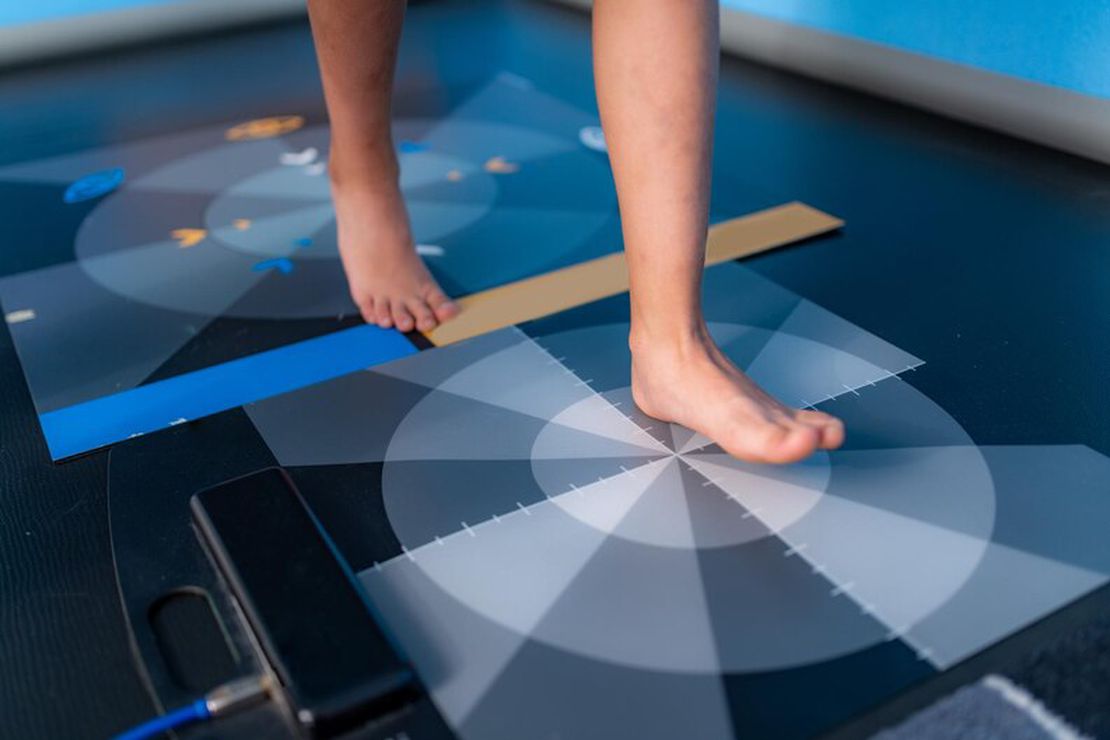The decision for amputation in diabetic foot wounds is a critical decision that directly affects the patient’s quality of life and health. In this article, we will provide detailed information about evaluating the necessity of amputation, alternative treatment methods and modern approaches.
You can read our article What Happens When Diabetes Affects the Feet? to get basic information about diabetic foot.
Amputation in Diabetic Foot Wounds: Treatment Option and Evaluation Factors
Diabetes is a chronic disease that can cause serious complications, especially on foot health. Diabetic foot wounds are one of the most important and most common complications of diabetes. Among diabetic foot symptoms are; foot wounds, infection, redness, swelling and non-healing wounds. Especially in big cities like Istanbul, correct information and treatment methods are of great importance for patients seeking diabetic foot treatment in Istanbul. Treatment processes of diabetic foot wounds can be complex and in some cases amputation may be among the treatment options. However, amputation should generally be considered as a last resort and other treatment methods should be tried first.
Necessity of Amputation in Diabetic Foot Wounds: Evaluation Factors
The necessity of amputation in diabetic foot wounds is based on the evaluation of a series of critical factors. These factors include elements such as the patient’s individual health status, wound characteristics and progression of infection. Diabetic foot symptoms and diabetic foot complications play an important role in the amputation decision:
1. No Healing
If the wound does not show healing despite appropriate and regular treatment and the infection has progressed, amputation may be considered. If the healing process is prolonged and no results are obtained with conventional treatments, amputation option can be considered. During diabetic foot treatment, especially if diabetic foot symptoms are observed, amputation decision may come to the agenda.
2. Advanced Infection
Since diabetic foot wounds carry a risk of infection, the infection can quickly spread and become serious. If the infection cannot be controlled with antibiotic treatment and other methods, amputation may be required. Such cases are frequently evaluated in diabetic foot centers in Istanbul.
3. Deep Tissue Involvement
When the wound spreads to deep tissues and bones, the probability of healing decreases. In cases where deep tissues are affected and there is widespread bone infection, the necessity of amputation can be evaluated. Diabetic foot wounds and diabetic foot symptoms become more prominent at this stage.
4. Advanced Necrosis
Necrosis can develop in diabetic foot wounds. If there are necrotic tissues and the healthy tissue area is limited, amputation may be considered. This can be done to prevent the spread of infection and threatening general health. The presence of necrosis during diabetic foot treatment can accelerate the amputation decision.
5. Poor Circulation
Circulatory disorder is a common problem in diabetic patients. Poor circulation can negatively affect the healing process of the wound. Insufficient circulation cannot carry enough blood and oxygen to the wound area, which can make healing difficult. In cases where poor circulation prevents healing, amputation option can be considered. Circulatory disorder also holds an important place among diabetic foot symptoms.
Alternative Treatment Methods Before Amputation
Before making an amputation decision, various alternative treatment methods offered by modern medicine should be tried:
Hyperbaric Oxygen Therapy (HBOT)
Hyperbaric oxygen therapy is a treatment method performed in a high-pressure oxygen environment. This treatment can accelerate the healing process by providing more oxygen to the wound area. It can give effective results especially in patients with circulatory problems.
Negative Pressure Wound Therapy (NPWT)
Also known as vacuum-assisted wound closure system, this method supports tissue healing by creating negative pressure in the wound area. This treatment increases wound cleaning and accelerates the formation of granulation tissue.
Biological Wound Dressings
Wound dressings made of collagen, hyaluronic acid and other biological materials support the natural healing process. These dressings encourage cell renewal by creating a suitable environment in the wound area.
Stem Cell Therapy
Current research indicates that stem cell therapy shows promising results in healing diabetic foot wounds. This treatment can support new blood vessel formation and tissue regeneration.
Amputation Risk Factors and Evaluation Criteria
When making an amputation decision, the following risk factors should be carefully evaluated:
Age and General Health Status
Advanced age and accompanying diseases (heart disease, kidney failure, hypertension) can affect the healing process after amputation. The patient’s general health status is of critical importance in evaluating surgical risk.
Diabetes Control
Poor blood sugar control increases the risk of complications after amputation. Keeping HbA1c value below 7% positively affects the healing process.
Nutritional Status
Insufficient nutrition, protein deficiency and vitamin-mineral deficiencies delay wound healing. Evaluation of nutritional status before amputation is important.
Psychosocial Factors
The patient’s psychological status, family support and social environment affect the rehabilitation process after amputation. Depression and anxiety can negatively affect the healing process.
Types and Levels of Amputation
Diabetic foot amputations can be performed at different levels according to the affected area:
Partial Foot Amputation
- Toe Amputation: Removal of only the affected toe
- Transmetatarsal Amputation: Removal of the front part of the foot
- Lisfranc Amputation: Removal of the middle part of the foot
Lower Leg Amputation
- Transtibial Amputation: Amputation below the knee
- Symes Amputation: Amputation at ankle level
Upper Leg Amputation
- Transfemoral Amputation: Amputation above the knee
- Hip Disarticulation: Amputation from the hip joint
Rehabilitation and Care After Amputation
The post-amputation process is of critical importance for long-term success:
Early Period Care
- Wound care and infection control
- Pain management
- Physical therapy and rehabilitation
- Psychological support
Prosthesis Application
- Selection of prosthesis suitable for amputation level
- Prosthesis training and adaptation process
- Walking training and daily activity support
Long-term Follow-up
- Regular controls and evaluations
- Diabetes control and foot care education
- Lifestyle changes and preventive measures
Prevention Strategies for Diabetic Foot Wounds
To reduce the risk of amputation, the following preventive strategies should be applied:
Daily Foot Care
- Checking feet every day
- Using appropriate shoes and socks
- Regular pedicure and nail care
- Using foot moisturizer
Diabetes Control
- Blood sugar monitoring and reaching target values
- Regular HbA1c control
- Compliance with nutrition plan
- Compliance with drug treatment
Regular Controls
- At least 2 diabetic foot examinations per year
- Evaluation of circulatory and nerve function
- Determination and management of risk factors
Conclusion: Amputation Decision and Multidisciplinary Approach
Amputation is a rare option considered as a last resort in the treatment plan of diabetic foot wounds. This decision is made by considering factors such as the patient’s general health status, age, diabetes control, presence of comorbidities and quality of life. The amputation decision should be made by a multidisciplinary health team and the patient’s participation and consent should be obtained. The risks and benefits of amputation should be clearly discussed and the patient should be fully informed.
Multidisciplinary Team Approach
- Endocrinologist: Diabetes control and metabolic regulation
- Vascular Surgeon: Evaluation of circulatory problems
- Orthopedic Specialist: Treatment of bone and joint problems
- Infectious Disease Specialist: Infection control
- Plastic Surgeon: Wound closure and reconstructive surgery
- Physiotherapist: Rehabilitation and prosthesis training
- Psychologist: Psychological support and adaptation process
Being conscious about diabetic foot treatment and diabetic foot symptoms can reduce the necessity of amputation. Regular controls and early intervention about diabetes, foot health and diabetic foot symptoms will increase patients’ quality of life. Thanks to modern treatment methods and multidisciplinary approach, amputation rates are gradually decreasing. However, amputation performed when necessary can save the patient’s life and improve quality of life.
Important Reminders
- Early diagnosis and treatment in diabetic foot wounds is of critical importance
- Regular foot care and controls reduce the risk of amputation
- Modern treatment methods minimize the necessity of amputation
- Multidisciplinary approach provides the best results
- Patient education and awareness is the foundation of prevention strategies
You may be interested in: For more information about modern approaches in diabetic foot treatment, you can read our articles on diabetic foot surgery and diabetic foot wound dressing. You can also visit our page for detailed information about our treatment methods.
You can get information from Prof. Dr. Aytaç Çetinkaya for more information.




